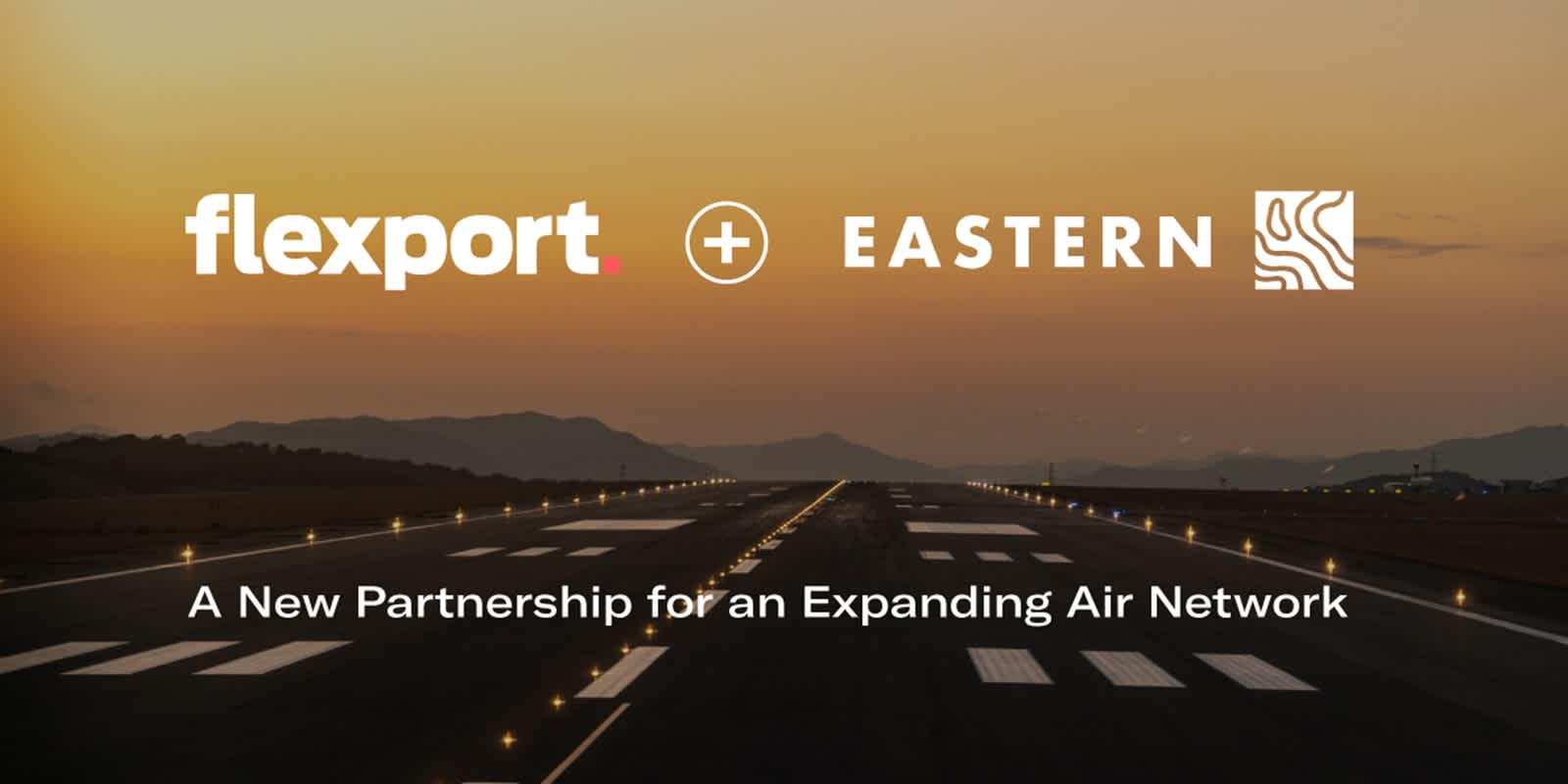
April 22, 2022
How Supply Chain Visibility Helps Fast-Growth Businesses Scale
How Supply Chain Visibility Helps Fast-Growth Businesses Scale
Trans-Pacific Eastbound (TPEB) crossings are taking ships an average of 109 days as of this writing (cargo ready date to destination port departure). Total transit times on Far East Westbound (FEWB) and TPEB are taking twice as long compared to pre-pandemic times. For small businesses and e-commerce companies, this requires demand planning months in advance.
Every segment of the global supply chain has taken a hit over the last couple of years. If it wasn’t port labor issues, it was the Suez Canal blockage. And if it wasn’t the delays caused by the Ever Given being stuck, it was COVID restrictions. And this is even before consumer demand for goods over services surged in 2021 driving an unprecedented volume of shipping, congesting ports and causing significant delays across every step of the supply chain. These factors have turned global container shipping into a highly disrupted, under-supplied seller’s market, in which it now costs 4 - 10 times the normal price to move cargo! It’s been a rough period for logistics and as a result, for global trade.
Here are some stats to put this in perspective:
- Effective ocean shipping rates have increased 5x since 2020. We haven’t seen this in the shipping industry for more than 30 years.
- The spot price per container on the China-U.S. East coast route grew by more than 500% from a year ago to $20,804 in August 2021. Just a month before that, in late July, the rate was just under $11,000.
- The cost for the China to the U.S. West coast route went up to almost $20,000, while the China-Europe rate was up to nearly $14,000 last year.
- Consumer spending online during the 2021 holiday season grew 8.6% year-over-year to a record $204.5 billion (source: Adobe Digital Economy Index).
- Consumer spending online for all of 2021 went up by 9% to a record $855 billion.
- Online spending was driven by a few key categories when compared to pre-season levels in Sept. 2021: toys (5.4x more), video games (4.5x more), books (3x more), groceries (2.7x more), electronics (2.2x more), baby/toddler products (2.1x more) and appliances (2x more).

Inflation is showing no signs of easing, consumer demand is still high which continues to exacerbate persistent supply challenges that produced more than 6 billion out-of-stock messages online the 2021 holiday season. In an industry dominated by spreadsheets, emails, and phone calls, how can a small business or e-commerce company stay on top of things? How can you keep your SKUs in stock and customers up-to-date on their order status? Do you have real-time data and visibility into every step of your supply chain so you can make decisions even after your goods are en route? How can you build resilience into your supply chain considering the chaos and unpredictability of ocean shipping today?
We’re going to be using a broad definition of business resilience going forward. “Business resilience refers to how effectively and efficiently an organization can pivot in order to maintain its foundational values and principles in the face of disruptions.” And that kind of supply chain resiliency depends heavily on end-to-end data visibility and the flexibility it affords a logistics team both in terms of routes and modes.
Real-Time Data Visibility for More Agility and Adaptability
For companies scaling rapidly, nonstop demand is just the start. The transparency necessary to see where your SKUs are at any given time is a major component of supply chain resilience. This level of data visibility enables a range of benefits: informed decision making, better analytics, happier customers, fewer bottlenecks, inter-department cohesion, smoother customs and compliance clearance, and so much more.
Having access to end-to-end visibility of your entire supply chain—from PO creation all the way to final delivery—down to the individual SKU level, empowers businesses of any size to respond faster to constantly changing needs. Flexport’s next-gen platform offers real-time data and insights, all easily accessible from a single source of truth for you, your partners and suppliers.
Small businesses polled by Gartner cite enhanced decision-making potential as a driving factor in supply chain technology investment. For example, the ability to access—with only a few clicks—self-serve data on transit times can help your team plan which route and/or mode to use for which SKUs.
Partners, suppliers, your customer service teams, and anyone else you choose can benefit from better access to real-time data and insights. The increased complexity of modern supply chains also calls for better analytics to help you stay in front of future unknowns. Impending bottlenecks can’t hide when you have end-to-end visibility that allows for preemptive mitigation of potential disruptions even when goods are en route.
Real-time tracking, like that offered in the Flexport platform, allows your team to make agile decisions because you know exactly where your shipment is at all times. This allows you to set customer expectations appropriately, which in turn helps keep your customers loyal to your brand. Transit time, landed costs, and container utilization are all metrics now within reach—thanks to the Flexport Platform’s power to structure, store, and safeguard your data. Collaborate in real time. Order from suppliers. Track inventory in motion. Message your warehouse. Our platform speeds workflows for everyone in your supply chain.
That level of visibility also holds the potential to assist teams across the organization—beyond your logistics team. Customer service can have access to that real-time tracking data, allowing them to keep buyers apprised of their order's precise location. Finance can see where their spend is going and make real-time adjustments. Compliance can provide appropriate access for auditors, streamlining that process as well. And marketing can make better decisions on which product to promote based on availability and expected warehouse delivery dates.
Beyond those benefits, perhaps the single largest benefit of end-to-end visibility is the flexibility it can bring to your logistics operations.
Flexibility Allows for Fast Supply Chain Pivots
Supply chain flexibility means being able to quickly adjust modes, routes, FCL > LCL, partial shipments, etc as soon as new information is available to your teams. It means you can adjust modes mid-transit should the situation call for it. But mostly it means you have maximum optionality. Supply chain is a group effort. Now, everyone on your team can answer their own questions, run and automate customized reports, and build their own models.
When demand shifts, adjust your modal mix with ease. This means making decisions like ensuring top-selling SKUs stay in stock by routing them via air priority, while the remainder of the order is shipped via ocean freight. Or the option to maintain consistency in delivery even when you don’t have consistent warehouse space by using LCL and partial shipments. Or the option of shifting to a direct-to-consumer model with ship-to-stock and ship-to-sell–by taking advantage of services like Flexport’s Flow Direct service.
Flexport uses aggregate data across clients and modes to predict trends, and consults with you on the best way to move your cargo. When the data shows a surprise rail slowdown, for example, you’re able to transload and book a truck for your cargo instead. Air cargo lands in days, not weeks, with predictable transit times. LCL can restock your top SKUs weekly with no minimum volumes—and, at Flexport, it’s carbon neutral.
Improve On-Time Delivery and Supply Chain Resilience
See your supply chain as a whole, spot any issues, and dive deeper to fix them together with your team. Whether it’s knowing when to make room at the warehouse, or sending your customers delivery updates, technology now enables real-time cargo tracking to help everyone stay up-to-date. Supply chain resilience is especially difficult to achieve during a global pandemic, compounded for small businesses and e-commerce brands that have smaller logistics teams and less in–house expertise.
It doesn’t have to be this way. A tech-first freight forwarding partner like Flexport can be an extension of your logistics team enabling data visibility to the individual SKU level. The consultative nature of our partnerships means you always have access to our global teams of experts. Taking steps to reign in your supply chain with data visibility and flexibility is the best first step you can take to begin mitigating the complexity of global trade in today’s world.
When every second counts, it helps to see your supply chain in one place. You can order goods, ship anywhere, and track it all from your dashboard. In the Flexport Platform, most tasks are done in minutes. Run your supply chain end-to-end with all the tools and support you need. And as you grow, Flexport’s reliable global logistics network and fast financing options bring new markets within reach.
Learn more about how we help e-commerce and fast growth brands scale at the speed of business. For more supply chain and logistics support, contact Flexport.





